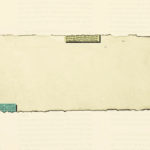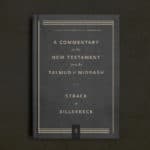
There are many books about the Bible and science, but this one is different. In this book I assume that both the Bible and science are sources of knowledge. I won’t be seeking either to “correct” the Bible by using science or to “correct” science by using the Bible. My aim is to use science to provide additional insights that will help us choose between different ways of understanding various Bible texts. So if two different interpretations are equally founded on the text, but only one of them agrees with what we know about the natural world, then we should take this as an additional factor in its favor.
How to Evaluate Scientific Theories
When looking at science, we have to be aware that some areas are more established and certain than others. However, this doesn’t mean that we should dismiss everything that is called a theory. This technical term is used for everything from the well-established theory of gravity to things as uncertain as a theory of mind. A theory is an explanation that incorporates all the currently known facts as simply as possible. It is called a theory because if other facts come along that can’t be fitted into that explanation, it may need to be revised. Therefore, Newton’s theory of gravity was revised when Einstein discovered that light bends around massive objects—though the refinement was so small that it doesn’t make any practical difference to our everyday lives.
When science stories get into the news, it is because exciting new things have been discovered. This can give us the false impression that the world of science is always changing and that most conclusions are uncertain. The vast majority of scientific findings never need revising, so they never get into the news, though they become part of our everyday lives through technology. If all this science wasn’t reliable, we’d never be able to make an electric car that is safe, or interpret signals from GPS satellites to find out where we are driving.
How to Evaluate Biblical Theories
This same methodology can be used to study the Bible. Just as a scientist regards facts as more important than the current theory, we should regard the text as more important than the current interpretation. If an interpretation of a particular passage agrees with some but not all other texts in the Bible, then the interpretation clearly needs to be developed further—just as scientific theories are constantly refined when new facts are discovered.
Let’s attempt, for example, to elucidate a theory about answered prayer. We may start out by interpreting the Bible as saying:
God grants the prayers of his followers.
But then we read about Cornelius, whose prayers God responded to even before he became a Christian (Acts 10:4), and how God loves seekers (Heb 11:6). So we revise our interpretation to:
God grants the prayers of those who seek him.
Then we remember that God doesn’t always answer prayers in the way we expect. For example, Paul asked God to release him from his “thorn in the flesh,” but after praying for this repeatedly, he was told the thorn would not be removed because God was using it for his good purpose (2 Cor 12:7–9). This makes us revise our interpretation again:
God grants the prayers of those who seek him, in accordance
with his good will.
Some believers, such as prosperity preachers, think that the simple interpretation we started with is correct. But most Christians incorporate the extra facts found in the Bible and revise their interpretation to encompass the whole of what the Bible says.
Bible + Science = Better Understanding
In this book we will go a little further. We will look at the facts that we find in the Bible and add to these the findings of science. Scientific ideas help us understand how things work, and in this book I attempt to apply science to help us understand what the Bible says.
I do not want to elevate scientific knowledge above what is clearly taught in the Bible. As I have said above, when the facts in the Bible are capable of more than one interpretation, our scientific knowledge can help us decide which interpretation is likely to be correct.
This is similar to the way that we use archaeology to help fill in the details that the Bible doesn’t mention. For example, the Bible describes the Philistines dominating the Israelites because they had the technological advantage of “chariots of iron” (Josh 17:16–18; Judg 1:19; 4:3, 13 ESV). But a chariot made completely of iron wouldn’t be fast or agile and would often sink in the mud, so the text is difficult to understand. However, archaeology supplies the detail that although they used iron for wheel rims, hubs, and other hard-wearing parts, the rest of the chariot was built from wood to be as light as possible for speed. This additional information from archaeology doesn’t correct the Bible, but it does help us understand it. And information from science can do the same.
Many books attempt to show that the Bible is true by arguing that it agrees with what scientists have found out, and others try to tell scientists they are wrong by citing interpretations of the Bible. This book tries to do something else: it seeks to use science as one of our tools to help understand what the Bible says. I’m not interested in proving anyone wrong or right; I’m interested in employing every available piece of knowledge to help understand the Bible in context. And in this book, we are going to use science to help us do that.

This post is adapted from Science and the Bible: Modern Insights for an Ancient Text by David Instone-Brewer (Lexham Press, 2020).






